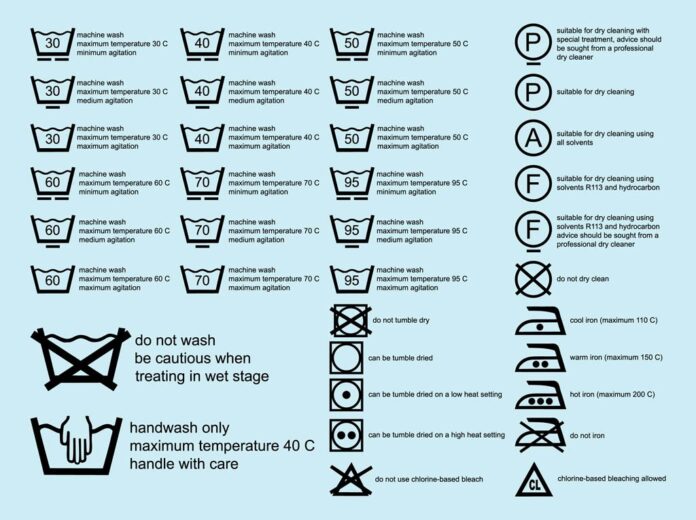There comes a time when you have to leave the nest, and you can’t count on your mom to wash your clothes for you. At first, you think it’s not a big deal. You can do it all by yourself. But then you accidentally take a look at the tag, and everything you ever believed in comes crashing down.
All jokes aside, it can get a little bit overwhelming when you’re trying to read the symbols on a tag. There are all these instructions about washing and drying, and unless you’re somehow naturally fluent in them – you will probably have a hard time understanding them.
However, it doesn’t have to be that way. We’ve decided to put our laundry-washing and drying experience to use and write a little guide that is going to help you understand these symbols once and for all.
But, before we get into the details, we must first disclose that these symbols might differ from time to time and manufacturer to manufacturer. However, despite not being identical, they will be very much similar to one another, so by understanding one – you’ll understand all of them.
Washing Instructions
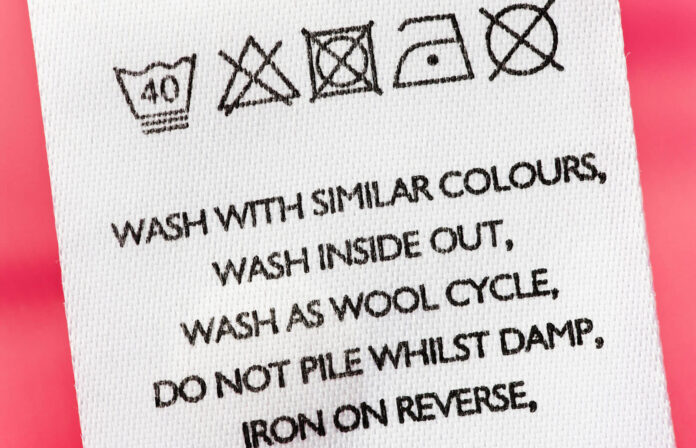
As you probably know, some clothes are machine-washable, and some aren’t. Some must be washed in cold water, while others you can literally boil until clean. Since none of us can obviously remember each fabric and how it’s supposed to be treated, manufacturers have decided to put the instructions on a tab.
When it comes to washing the items, the symbol’s usually a bucket filled with water, with a few additional elements. Let’s go through them.
- Bucket filled with water – Bucket with water indicates that that particular piece of clothing is machine washable. As simple as that.
- Bucket with numbers – Bucket with water with numbers (usually 30, 40, or 60) written inside of it indicates a machine-washable item, but also tells you at what temperature you should wash the garment. Pretty self-explanatory, isn’t it?
- Bucket with dots – Bucket with water with dots is the same as the bucket with water with numbers. One dot represents cold water, two dots are warm, and three or even four dots represent hot water.
- Bucket with lines underneath – Lines underneath the bucket represent different wash cycles. A single line stands for a synthetic cycle, while a double line stands for a gentle or delicate cycle.
- Bucket and a hand – Hand-washable or machine-washable on hand-washing cycle/program.
- Crossed-out bucket – Not washable.
Tumble-drying instructions
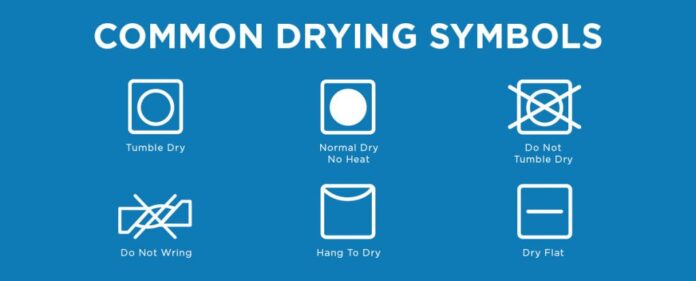
Some garments can be safely put into a dryer, while others must be air-dried. However, how do you know which ones are which? Well, it’s simple – you just look at the tag and look for circles and squares. These symbols indicate how to dry a piece of clothing.
Here’s how to decode them.
- Square with a circle inside of it – This garment is perfectly safe for a tumble drier.
- Square/circle with dots – As we learned from our previous example, dots represent temperature. So, in this case, a square/circle with a single dot represents tumble drying on low heat, while a square/circle with two dots represents tumble drying on high heat.
- Square/circle with lines underneath – Once again, if we remember washing symbols, we’ll be able to easily figure out this one. Namely, a square/circle tumble drier symbol with a single line below it means tumble drying synthetics, and a square/circle double underline means delicate or gentle tumble drying cycle.
- Crossed-out square/circle – Do not tumble dry.
Those were the symbols concerning tumble drying. If you’d like to learn more about them, feel free to click here, but for now – we have to move on.
- Square with three vertical lines – This symbol tells us that this particular piece of clothing is best left to drip dry. For the least amount of mess, you’d keep this one over a bathtub or in your yard if you have one.
- Square with a single horizontal line – This is another symbol that tells us how to air-dry an item. In this case, a horizontal line indicates that we should flat-dry (lie down flat over a drying rack) this piece of clothing.
- Folded-over square – Just hang it out to dry.
Additional Maintenance Symbols to Understand
Aside from washing and drying, there are other symbols to be mindful of, so let’s take a look at them too.
Bleaching Symbols
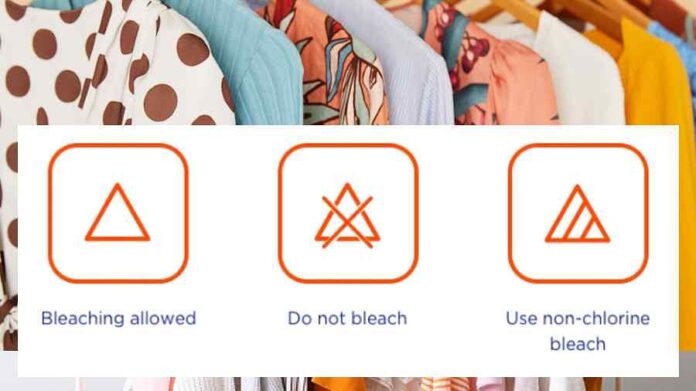
Bleaching symbols are shown as triangles. Here’s what they mean.
- Triangle – Bleaching is allowed and won’t harm the garment.
- Triangle with two lines inside of it – Bleaching is allowed, but only with non-chlorine bleach.
- Crossed-out triangle – Bleaching is not allowed.
Dry Cleaning Symbols
Dry cleaning symbols are represented as circles. Here’s what they mean.
- Circle – Dry clean only. Don’t hand-wash or machine-wash.
- Circle-A – Essentially the same as the previous one. Dry clean, and use any solvent.
- Circle-P – Dry clean the item with any cleaning solvent except TCE.
- Circle-F – Dry clean the item with petroleum solvents only.
- Crossed-out circle – Do not dry clean.
- Circle with adjacent lines – These symbols represent additional dry cleaning instructions. For instance, a line in the bottom right corner indicates dry cleaning on low heat, and a line in the bottom left corner indicates dry cleaning on a short cycle.
Ironing Symbols
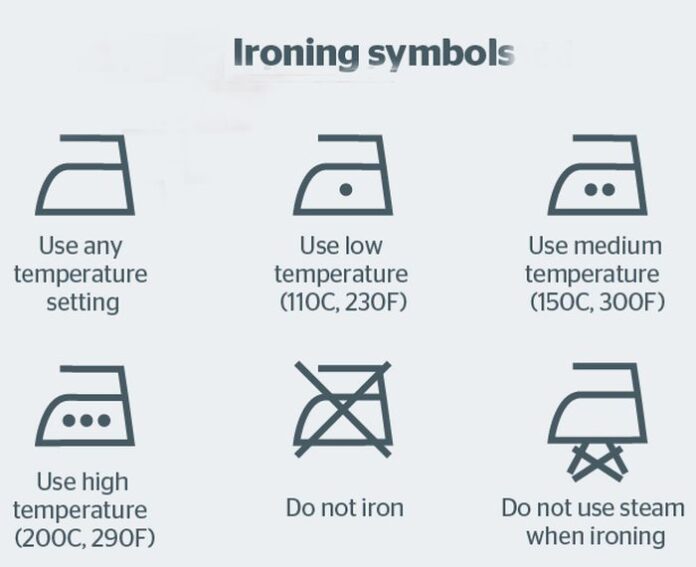
The ironing symbol is obviously an iron. These are pretty self-explanatory, but let’s go through them either way.
- Iron with dots – As we’ve learned so far, dots represent temperatures. One dot is the low temperature, two dots are medium, and three dots and high. In this case, one dot means 110°C, two dots mean 150°C, and three dots mean 200°C.
- Crossed-out lines underneath the iron – Steaming is not permitted.
- Crossed-out iron – Do not iron.
Conclusion:
There you have it – laundry tag symbols explained. If you didn’t know what either of these stood for, we certainly hope you do now.
We did our best to cover all the bases and explain every symbol you might find on there, but if you happen to stumble upon a different one – let us know. We’ll figure that one out together.
